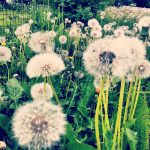 With the annual autumnal bird migration gaining momentum, a Lithuanian ornithologist suggests three locations to turn the eyes to the skies and watch millions of different birds wing their way to the South.
With the annual autumnal bird migration gaining momentum, a Lithuanian ornithologist suggests three locations to turn the eyes to the skies and watch millions of different birds wing their way to the South.
October 12, 2020, Lithuania. The annual autumnal bird migration, one of the most spectacular phenomena in the natural world, is back. Each fall, millions of birds leave their breeding grounds in the Northern Hemisphere to winter in the Western and Southern Europe, Africa and Asia.
The Baltic Flyway, stretching from Scandinavia and Northern Russia down through the Baltic states, is among the most important bird migration routes in the whole world. Lithuania, home to unspoiled nature and the very bottleneck of the flyway, is one of the best countries to marvel at this spectacle.
“The autumnal migration actually begins in June, when juvenile Starlings, after growing a bit stronger, begin taking off to the South or the West,” said Marius Karlonas, a Lithuanian ornithologist. “Waders, terns, gulls and raptors then follow in the coming months. The full-on migration begins in September and ends in late October—during this period millions upon millions of birds fly over the Lithuanian skies. It is truly a mesmerizing show.”
There are three hot-spots in Lithuania to make the most out of the autumnal migration.
1. Curonian Spit National Park
The Curonian Spit National Park, treasured for its prehistoric sand-dunes, is also an excellent spot for birdwatching. In fact, the UNESCO-listed peninsula, located between the Baltic Sea and the Curonian lagoon, offers six different observation towers with accompanying information stands to see the flocks of birds flying across the area.
One of the locations that is particularly suitable for birdwatching is the Nagliai Strict Nature Reserve. There, visitors can observe such rare bird species as peregrine and Red-footed Falcons, Red Kites or Rose Starlings.
“The autumn migratory route over Nagliai is one of the busiest in Europe,” said Karlonas. “It is important to remember that the most intensive migration occurs only two or three hours after sunrise, so to witness this spectacle one must get out of the bed a bit earlier.”
The national park also has its own ringing station. Every autumn, nets are set up at the Juodkrantė Ringing Station to catch and ring over 10 thousand birds: great and blue tits, finches, robins and others.
2. Ventė Cape
When it comes to birdwatching, Ventė Cape is second to none. Situated in the Nemunas River Delta, the headland sees half a million of birds passing each day during the peak migratory season in September and October.
“Ventė is a spectacular bird migratory bottleneck,” said Karlonas. “In late October, you can even spot birds from Siberia heading towards the South—Pallas’s leaf warblers, Rough-legged Buzzards and others.”
Ventė Cape is home to one of the oldest bird ringing stations in Europe. Opened in 1929 by the legendary Lithuanian zoologist and biologist Tadas Ivanauskas, the station has been educating the public and substantially contributing to the scientific field of ornithology.
The Ventė Cape area includes a polder museum and a 100-year-old lighthouse which is now available for exploration. Visitors can also take a boat ride in the nearby Minija River and explore the Minija village, also known as the Lithuanian Venice.
3. Lake Žuvinas
Lake Žuvintas lies at the heart of Lithuania’s oldest and largest reserve—the Žuvintas Biosphere Reserve. With the average depth of only 0.6 m, the lake is the shallowest one in the country and is often regarded as a paradise for waterfowl. Needless to say, it is also a paradise for birdwatchers.
Žuvintas is home to over 240 different bird species, the majority of whom are classified as endangered. Groups of migratory predators such as Marsh and Hen Harriers, buzzards, hawks and Lesser Spotted Eagles spend their days hunting around in the field and the largest predatory birds in Lithuania—White-tailed Eagles—zigzag over the lake. Meanwhile, flocks of migrating geese, cranes, ducks, lapwings and others stop for a rest or breed.
“The cranes start returning to the swamp two hours before sunset,” Karlonas. “The view of chains of long-necked silhouettes filling up the sky and their voices echoing across the lakes, marshes and bogs leaves no one indifferent to the magic autumn brings. Lithuania has indeed a lot to offer in terms of natural splendors.”
For more information about the autumnal migration phenomenon in Lithuania, visit this page.
About Dave's Travel Corner
 Dave's Travel Corner is a travel content, resource provider and community (founded 1996) providing travel Guides written about Dave's personal travel experiences and Journals, pages that contain trip summaries and experiences written by fellow travelers. We spotlight locations and attractions with an article linked directly from our homepage including content across our blog, photo and video galleries. We use a combination of social media, written content, photography and videos to promote locations. Not only does the content appear on this site but we have direct partnerships with other well visited travel sites for placement of the content. Since 1996, we have also established hundreds of relevant link exchanges with other travel sites.
Dave's Travel Corner is a travel content, resource provider and community (founded 1996) providing travel Guides written about Dave's personal travel experiences and Journals, pages that contain trip summaries and experiences written by fellow travelers. We spotlight locations and attractions with an article linked directly from our homepage including content across our blog, photo and video galleries. We use a combination of social media, written content, photography and videos to promote locations. Not only does the content appear on this site but we have direct partnerships with other well visited travel sites for placement of the content. Since 1996, we have also established hundreds of relevant link exchanges with other travel sites.
Visitors to Dave's Travel Corner will also find thousands of travel related links organized by categories on the Resources Page, a Photo Gallery containing International travel photos, Book Reviews, and Product Reviews focusing on products useful for travelers, fully automated Forums, Tour Bookings offering over 4400 unique tours around the globe, Interviews with those making news in the travel industry and Videos - specializing in International travel videos as well as home of the Dave & Jim Show.
Dave's own travel blog is Above the Clouds which focuses on International Travel & Lifestyle.
For information on advertising please choose from a variety of advertising options here.
Contributors are welcome





After this final taste of autumn migration we must make our way back to Tallinn for the return flight to London. However, one last magical experience awaits as we stop en route to admire the colourful peat mosses at Tolkuse Bog, rounding off a wonderful birdwatching holiday with images of the September landscape in one of Europe’s most scenic countries. Overall, an excellent trip during which we saw much of the beautiful countryside of Estonia as well as its bird life.
Jill – I wish I was bird watching in Lithuania right now 🙂